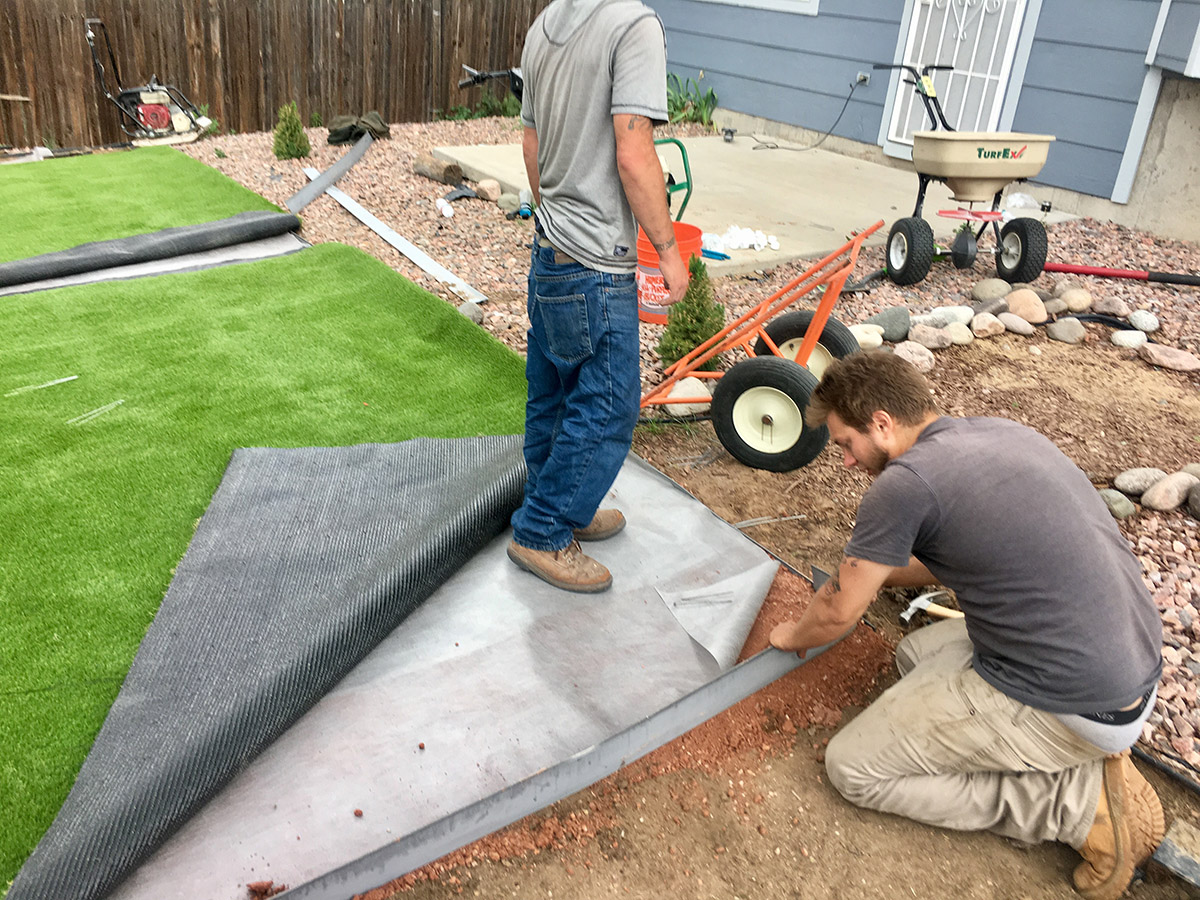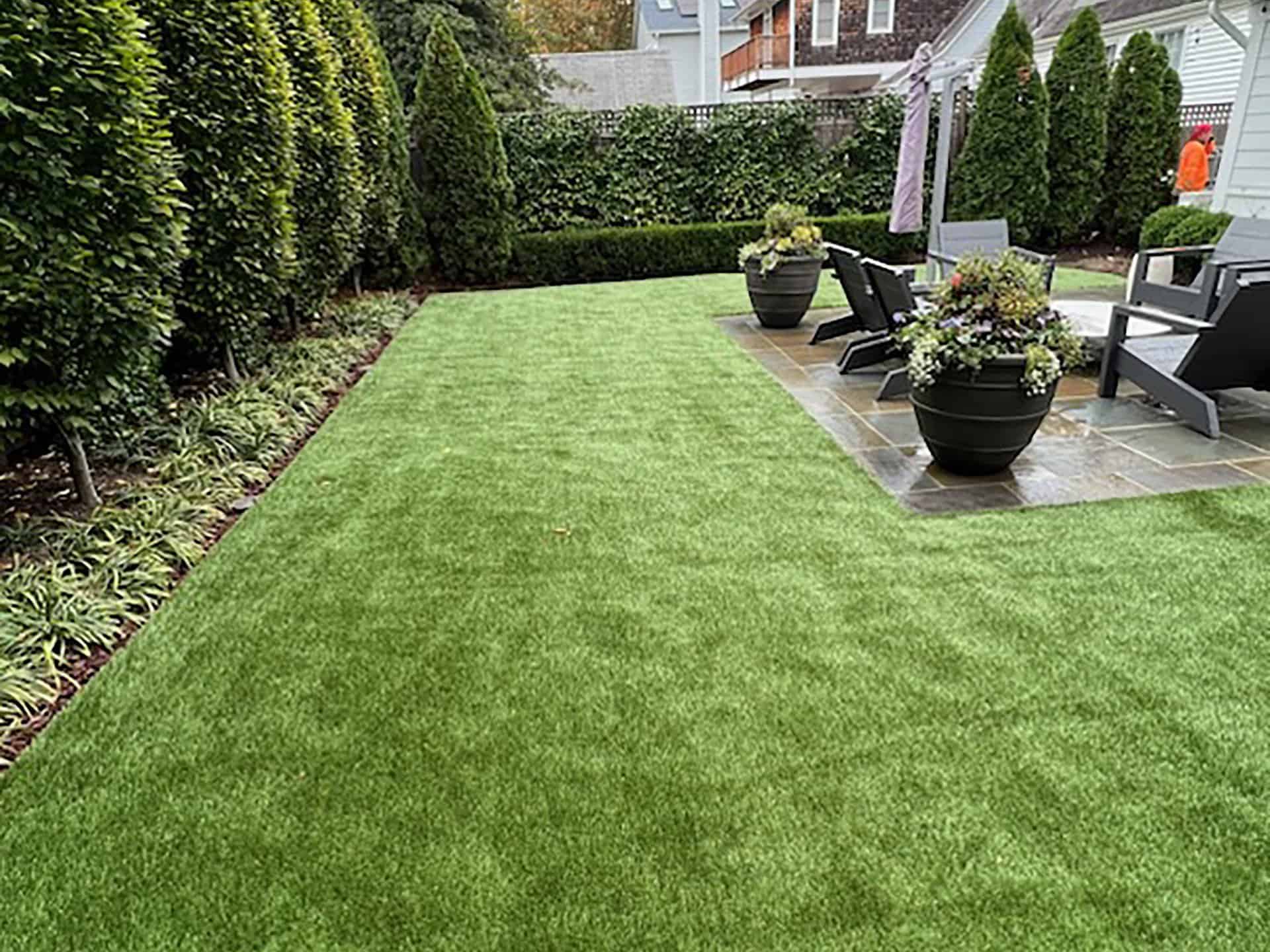Personalized Turf Installation Phoenix AZ for Residences, Businesses, and Recreational Spaces
Personalized Turf Installation Phoenix AZ for Residences, Businesses, and Recreational Spaces
Blog Article
Delve Into the Environmental Benefits of Opting for Synthetic Grass Solutions
The adoption of synthetic grass solutions offers an engaging chance to attend to pressing environmental challenges. By considerably decreasing water usage and reducing the application of harmful chemicals, these choices not just advertise lasting landscaping however likewise safeguard local ecosystems. Additionally, the lower carbon footprint linked with lowered upkeep tasks adds to an extra lasting method to land administration. The implications of these advantages extend beyond plain preservation efforts, increasing questions concerning their lasting influence on habitat preservation and general ecological equilibrium. Exploring these measurements exposes an intricate interaction worth thinking about.
Water Conservation Benefits
One of the most substantial benefits of man-made lawn is its capability to save water. Standard grass yards call for substantial irrigation, specifically in areas prone to drought or water restrictions. In comparison, synthetic grass does not need watering, dramatically reducing the total need for water sources. This feature is particularly advantageous in deserts where water scarcity is a pressing issue.
By getting rid of the demand for routine watering, synthetic grass adds to sustainable landscape techniques and helps alleviate the environmental effect of too much water usage. Moreover, the conservation of water reaches the decrease of overflow, which can cause soil disintegration and river contamination.
Furthermore, the installation of man-made lawn permits municipalities and home owners to assign water resources a lot more successfully, focusing on crucial uses such as drinking water and farming. The change in the direction of synthetic grass not only promotes accountable water use however likewise aligns with broader ecological goals focused on maintaining all-natural sources.
As areas significantly focus on sustainability, the water conservation benefits of synthetic grass present an engaging situation for its fostering in industrial and domestic landscaping projects.
Lowered Chemical Usage
The shift to synthetic grass significantly lowers the reliance on chemical treatments generally made use of in natural yard maintenance. Traditional grass monitoring commonly includes the application of herbicides, plant foods, and pesticides to promote growth and control bugs. These chemicals can pose threats to human wellness, regional wild animals, and the atmosphere, contributing to soil and water contamination.
On the other hand, synthetic lawn removes the requirement for these hazardous materials. Once set up, it requires marginal maintenance, mostly containing routine cleansing and irregular infill replenishment. This decrease in chemical usage not only profits the prompt atmosphere however additionally adds to more comprehensive ecological security. By decreasing the release of artificial compounds into the ecological community, man-made turf promotes much healthier dirt and water supply.
In addition, the lack of chemical overflow connected with man-made turf installments assists shield neighborhood rivers from air pollution, supporting aquatic life and maintaining biodiversity. Arizona artificial turf. As neighborhoods progressively prioritize sustainable methods, selecting artificial turf offers a practical option that lines up with environmental conservation goals. With this shift, homeowner can appreciate lush environment-friendly rooms without jeopardizing environmental wellness, leading the way for an extra lasting future
Reduced Carbon Footprint

Furthermore, the setup of synthetic grass can lead to substantial water conservation. All-natural grass require substantial quantities of water for irrigation, which not only includes in the carbon footprint linked with water removal and treatment however also stress neighborhood water sources. On the other hand, synthetic grass needs very little upkeep, needing no watering, thereby substantially lowering water use and its associated energy expenses.
Additionally, the long life of synthetic grass contributes to its decreased carbon impact. With a life next expectancy of approximately 15 years or even more, the requirement for constant substitutes is diminished, resulting in less waste and reduced energy consumption in production and throwing away typical turf options. Generally, synthetic grass provides a sustainable option for environmentally aware landscaping.
Environment Preservation
Environment preservation is a vital factor to consider in the argument over landscape design choices, particularly when comparing synthetic grass to natural grass. All-natural turf yards usually call for considerable upkeep, including the use of fertilizers, herbicides, and chemicals, which can negatively impact neighborhood ecosystems. These chemicals can seep into the soil and waterways, hurting indigenous vegetation and fauna and disrupting regional habitats.
Synthetic lawn removes the demand for unsafe chemicals, therefore safeguarding nearby wildlife and keeping the honesty of bordering ecosystems. The installation of man-made turf can lead to the conversion of former yard locations right into even more biodiverse landscapes, such as pollinator yards or indigenous plant areas, which can support regional wildlife.
Ultimately, the change to synthetic grass not only preserves water and lowers upkeep initiatives however likewise fosters an extra harmonious relationship between human tasks and the native environment, promoting environment conservation while doing so.
Long-Term Sustainability
Long-term sustainability is a vital aspect in assessing the advantages of synthetic grass over conventional lawn lawns. One of the most substantial advantages of synthetic grass is its resilience; it can last up to 15-20 years with marginal maintenance, whereas all-natural turf requires frequent reseeding and substitute. This longevity minimizes the need for constant resources, such as water, fertilizers, and pesticides, which are vital for keeping a healthy grass see this lawn.
Additionally, synthetic grass adds to a reduction in carbon exhausts connected with lawn care devices. Traditional grass commonly require gas-powered mowers, leaners, and blowers, all of which contribute to air contamination. Turf installation phoenix az. In comparison, synthetic lawn eliminates the requirement for such devices, advertising a cleaner atmosphere
In addition, the production of synthetic grass significantly utilizes recycled products, boosting its sustainability account. As producers adopt environment-friendly practices, the environmental impact of synthetic grass continues to decrease.

Final Thought
The fostering of synthetic grass services provides considerable environmental advantages, including significant water preservation, minimized dependence on damaging chemicals, and a reduced carbon impact. In addition, synthetic grass help in maintaining all-natural environments by lessening land disturbance and promoting long-term sustainability through using durable products. Jointly, these elements underscore the possibility of fabricated lawn to contribute favorably to ecological wellness and use a feasible alternative to typical landscape design methods in a progressively resource-conscious globe.
In comparison, artificial lawn does not need watering, significantly minimizing the total demand for water sources. By lessening the release of artificial compounds into the ecological community, man-made turf promotes much healthier dirt and water systems.
Furthermore, the setup of artificial grass can result in substantial water preservation. In contrast, artificial grass needs marginal upkeep, requiring no watering, consequently substantially reducing water use and its connected power expenses.

Report this page